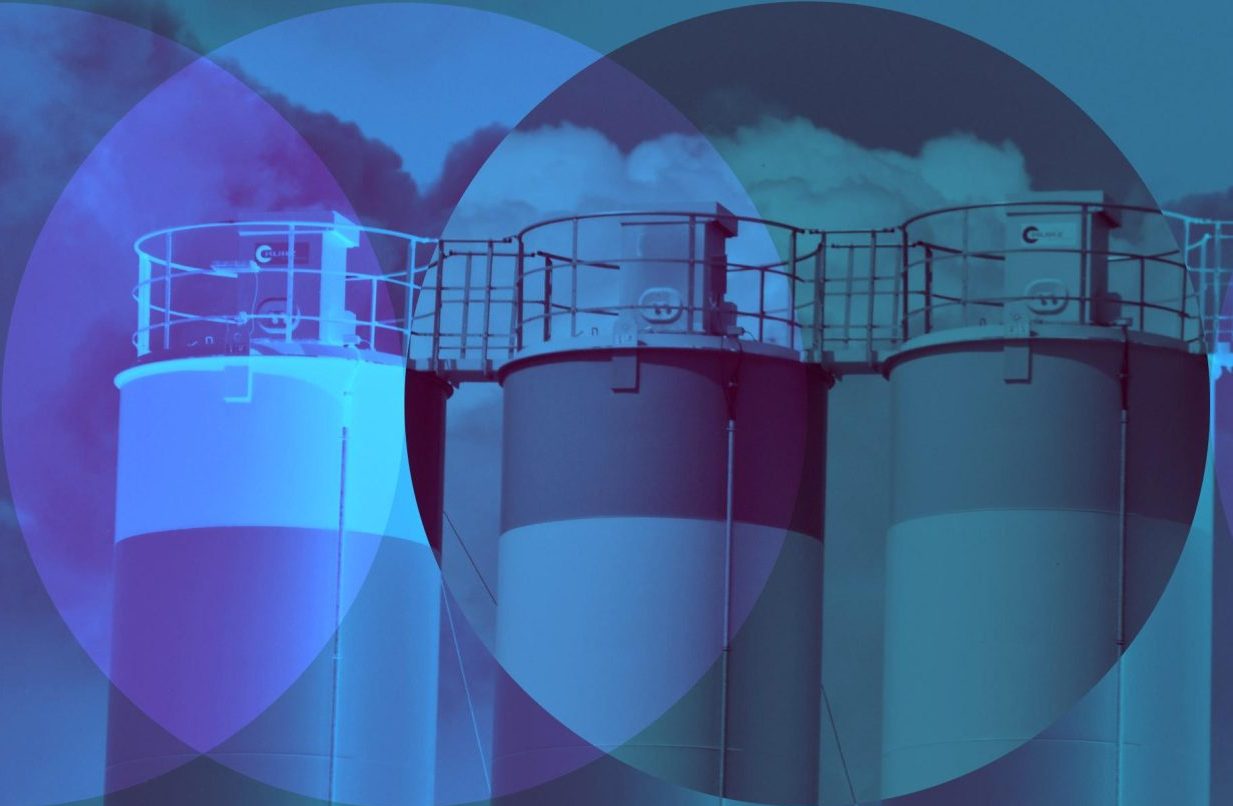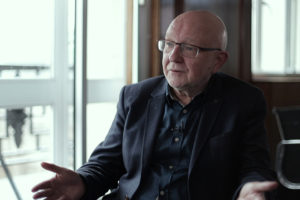How Technology Affects Traditional Social Practice...
Gadget interaction, digital surfing, and the "membrane principle"

Most popular science magazines discuss technological advancements with understandable optimism. They publish stories about scientific discoveries, the advent of robotic surgeons, smartwatches, and autonomous vehicles. However, this trend in the development of civilization has a darker side that is often overlooked. It involves the creation of new colonial systems, child labour, and the dire situations faced by countries with weak economies. Why should techno-optimism be tempered with a discussion on responsible approaches to different regions, and why must the energy transition account for coal realities?
The term “Fourth Industrial Revolution” officially entered the discourse in 2015, popularized by Klaus Schwab, head of the World Economic Forum in Davos. The idea centres on significant changes in technology, industry, and energy, reshaping social life. Building on the widespread availability of digital technologies from the Third Industrial Revolution, the Fourth Industrial Revolution is primarily driven by the convergence of digital, biological, and physical innovations.
For the average person, the Fourth Industrial Revolution is marked by smart speakers, virtual reality for learning and leisure, and the increased automation of routine processes in industry. On a global scale, this stage could help solve the world’s energy trilemma: the shift to zero energy consumption, energy security, and energy accessibility. As a result, technological transitions are happening in energy sources (from fossil fuels to clean energy) and how these sources are managed (from centralized to decentralized systems, fully automated processes).
The so-called old technologies — centralized networks distributing electricity, often produced by coal-fired power plants — are being replaced by the Fourth Industrial Revolution’s more flexible, decentralized energy systems: solar panels, wind turbines, and other locally deployable technologies that have become more affordable and environmentally friendly.
However, not all countries can access the resources necessary for such transitions. Financial, educational, and technological barriers prevent many nations from keeping pace despite similar aspirations. Often, these countries are involved in the technological transitions of other nations, not as partners sharing the benefits of progress but as sources of raw materials.
A good example is South Africa’sAfrica’s energy transition. Over 80% of the country’s electricity is generated by coal-fired power plants, with significant coal reserves projected to last for the next two centuries. This reliance on coal severely impacts the environment and public health, while the outdated plants struggle to meet the demands of a growing urban population. Moreover, the global agenda has led investors to pull out of coal-related projects, including technological upgrades to the coal industry. Yet, coal remains crucial, providing thousands of jobs and supporting people’s livelihoods in several major provinces.
South Africa is also a very sunny country with a high potential for solar energy, which could replace coal with sufficient time and financial investment. However, the real challenge lies elsewhere. The state-owned Eskom, the primary producer and distributor of electricity, is a vertically integrated company that controls the national grid. Eskom ranks among the top seven electricity producers in the world, employing hundreds of thousands directly and indirectly. It is also responsible for about 46% of South Africa’sAfrica’s national carbon emissions. The country’s coal plants are ageing and can no longer meet the rising electricity demand, while global pressure is mounting to shut them down through international agreements and the withdrawal of investments. However, South Africa needs more technological capability to ensure energy security without coal, leaving the government in a difficult position with few alternatives.
Amid these challenges, major coal-mining corporations, primarily owned by foreign companies, are rapidly divesting from coal assets and shifting to green energy investments. This doesn’t necessarily reduce coal production but adds a new layer to the process: companies no longer invest in coal directly but purchase it from smaller, so-called junior miners, which doesn’t mitigate environmental harm.
As a result, large companies operate within a favourable legal framework, while their contractors — people or organizations constrained by economic and technical limitations — continue working with outdated methods, facing significant environmental risks. This situation is also dangerous for the health and safety of the miners themselves. Furthermore, a whole sector of artisanal and illegal mining has emerged, where coal is dug by hand, leading to the formation of criminal enclaves that plunge local communities into waves of violence as they fight to control territories.
Most energy transition researchers focus on how energy systems are being reformed, including electricity production and distribution methods. However, another critical question is what will happen to traditional energy sources as these changes occur.
In 2021, after the pandemic lockdowns, demand for coal plummeted due to a slowdown in industrial activity, raising hopes within the international community for a resolution to global environmental challenges. However, by 2022, partly due to the conflict in Ukraine, energy became a critical global issue once again. During this time, Russia was removed from the list of European coal suppliers, and South Africa stepped in to fill the gap. This shift caused coal prices to soar, making the coal industry in South Africa highly profitable and sparking a rush among small-scale miners.
Thus, while the global community has developed a discourse around moving away from fossil fuels, the world’s leading economies continue to consume coal on a large scale, driving demand for this resource. Coal-producing countries are in a stalemate: continuing coal production becomes increasingly tricky as technologies become obsolete, yet replacing coal remains unfeasible.
At the COP27 UN Climate Conference in Egypt, the BASIC alliance (Brazil, India, South Africa, and China) expressed “serious concern” that developed countries have backtracked their financial commitments and obligations to mitigate climate change. They noted a “significant increase” in fossil fuel consumption and production by developed countries in the past year, even as these nations continue to pressure developing countries. According to BASIC, such double standards are incompatible with climate justice.
Abandoning coal is a complex problem for developing countries for another reason: many industries, including steel and metallurgy, require a stable electricity supply and a baseload. This is something that solar and wind energy can only provide with the implementation of additional technologies (energy storage systems, batteries), which can supply electricity when renewable sources are not generating power due to a lack of wind or sunlight. While this is feasible for households, more is needed for the stable operation of industrial facilities. In developed economies, baseload is typically secured through a mix of nuclear energy, gas, hydro, and sometimes coal—varying by country.
Denmark is a successful example of how energy operators have learned to manage this issue. They have built enough wind turbines and solar panels to meet energy needs in winter and produce excess energy in summer. This approach has been successful for a country of Denmark’s size, geography, and economic structure. Denmark can be considered a model nation in this regard.
Green hydrogen technologies could be an alternative. Leading global economies are working on such projects. The International Energy Commission has assessed the readiness of technologies that could provide clean baseload energy, estimating that they will be available by 2050.
By then, battery production capacities will likely have developed enough to make energy storage cheap and accessible on a large scale. It’s important to note that this is not a scientific mystery but an engineering challenge, so affordable, high-capacity batteries will indeed emerge. But this will take decades.
The Fourth Industrial Revolution has spurred rapid growth in the Internet of Things, autonomous technologies, and machine learning, relying on material resources like cobalt, lithium, tungsten, and vanadium. Significant reserves of these resources are found in regions with low levels of economic development, particularly in African countries. As a result, these regions become raw material suppliers for the world’s leading economies undergoing green transformation. However, these countries’ economic and legal development levels often fail to ensure the ethical extraction of resources, making them cheap and attractive to large tech companies that produce high-tech products.
Despite the apparent risks, this issue is not frequently discussed. One notable investigation on this topic was published by The Washington Post in 2016, where journalists traced the supply chains for Apple and found that lithium was being mined manually under hazardous conditions, including illegal child labour. Although Apple pledged to revise its policies, little has changed in practice. In 2019, Apple, along with Google, Dell, Microsoft, and Tesla, faced accusations of several child deaths linked to cobalt mining by these children, whose labour was exploited by the companies.
Experts agree that coal will eventually disappear from the energy mix in the coming decades. However, the methods of phasing out coal can vary. In this context, it is essential to complement the green energy discourse with discussions on managing the transition within existing conditions. Additionally, we must consider who the green energy economy is designed for and the cost for those who lack the means to participate. While the new economy is being created, old colonial-like methods are still used. The difference is that today, the pressure is not applied through force but through economic realities and technological inequality.

Gadget interaction, digital surfing, and the "membrane principle"

Professor of Philosophy of Science John Worrall on the difference between correlation and causation, controlle...

Media Scientist Renira Rampazzo Gambarato on the theory of systems, the elements of transmedia storytelling, a...